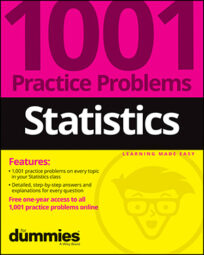Specific terms are used to describe problems with surveys and samples. Make sure you pick up on subtle differences. Here are the most common terms:
Sampling frame: A list of all the members of the target population.
Census: Getting desired information from everyone in the target population.
Random sample: Each member of the population has an equal chance of being selected for the sample.
Bias: Systematic unfairness in sample selection or data collection.
Convenience sample: A sample chosen solely for convenience, not based on randomness.
Volunteer/self-selected sample: Sample where people determine on their own to be involved.
Non-response bias: Occurs when someone in the sample doesn't return or doesn't finish the survey.
Response bias: When the respondent takes the survey but doesn't give correct information.
Undercoverage: Sampling frame doesn't include adequate representation from certain groups within the target population.
Sample questions
Why is bias particularly problematic in surveys?
Answer: because it may be impossible to detect and, thus, impossible to correct
Many potential causes of bias in survey research exist, and they're particularly problematic because the survey results alone may not give any indication of what kinds of bias, if any, affected the results. Thus, it may be impossible to compensate or correct for any biases present in the data.
You want to survey students at a high school and calculate the mean age. Which of the following procedures will result in a simple random sample?
A. classifying the students as male or female and drawing a random sample from each
B. using an alphabetized student roster and selecting every 15th name, starting with the first one
C. selecting three tables at random from the cafeteria during lunch hour and asking the students at those tables for their age
D. selecting one student at random, asking him or her to suggest three friends to participate and continuing in this fashion until you have your sample size
E. numbering the students by using the school's official roster and selecting the sample by using a random number generator
Answer: E. numbering the students by using the school's official roster and selecting the sample by using a random number generator
This method is the only one described that will result in a simple random sample.
The other methods suggested are a stratified sample (classifying the students as male or female and drawing a random sample from each), a systematic sample (using an alphabetized student roster and selecting every 15th name, starting with the first one), a cluster sample (selecting three tables at random from the cafeteria during lunch hour and asking the students at those tables for their age), and a snowball sample (selecting one student at random, asking him or her to suggest three friends to participate and continuing in this fashion until you have your sample size).
Suppose that you conduct a survey by showing an 800 number on the television screen during a popular program and inviting people to call in with their response to a posted question. What type of bias is likely to result?
Answer: volunteer sample bias
You'll receive responses only from people who happen to be watching the program and then volunteer to participate in the survey. Because you didn't select them yourself beforehand, they don't make up a statistical sample, and they probably don't represent any real population of interest.
Sometimes scales are reversed during the course of a survey. For example, with Likert scale items, 1 may sometimes mean strongly agree and sometimes strongly disagree. What is one reason for this reversal?
Answer: to reduce bias caused by always using positive or negative statements
Some people may have a tendency to agree to positive statements rather than the equivalent question written as a negative statement, so by including both types of statements, this bias can be reduced.
If you need more practice on this and other topics from your statistics course, visit 1,001 Statistics Practice Problems For Dummies to purchase online access to 1,001 statistics practice problems! We can help you track your performance, see where you need to study, and create customized problem sets to master your stats skills.

